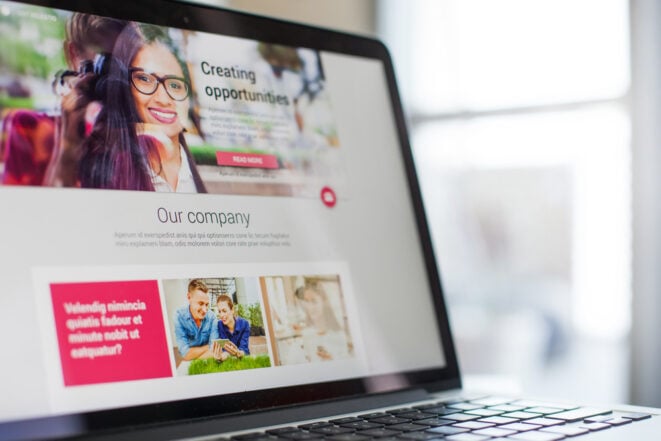11 Sales Funnel Metrics That Will Help You Boost Sales
Dries Cronje
Updated by Tara Malone
Are you astounded by the sheer number of sales funnel metrics out there?
If you’re like most solopreneurs, you tend to ignore them all.
You know they’re essential metrics to watch, but you just have too much to do.
Still, deep down you wish you had the time, skill, and capacity to measure the crucial statistics of your funnel.
It’s like you live with this constant, nagging feeling of inferiority. You know other people are measuring the critical metrics, and you know their sales funnels probably outperform yours.
The good news is you’ve come to the right place!
In this post, we’ll consider three different phases of your sales funnel, and then look at the essential metrics for each of these. We deliberately ignore stats that aren’t worthy of your limited time, and we also try and keep things super simple.
This way you can focus on the metrics that matter most, and use them to bring your business to the next level in 2022.
Now let’s get started!
Sales Funnel Metrics: The Big Picture

Let’s briefly take a few steps back and look at the big picture before getting into the nitty-gritty of the metrics themselves.
What’s the purpose of a sales funnel?
A sales funnel simply automates the sales process that guides people from complete brand strangers to happy, paying customers.
You can think of a sales funnel as an automated salesperson. In a sense, it’s a combination of computer hardware and software that performs the work of a salesperson.
And of course, you need to track the performance of this “automated salesperson.”
What information will be useful to know?
Using some elementary thinking about your sales funnel, we know that answers to the following questions will be helpful:
- How many people do you feed into your funnel?
- Where do these people come from?
- How many people go all the way through your funnel?
- How long do people typically take to move through your funnel?
- Is every piece of your funnel functioning correctly?
- If not, can you identify and “fix” parts of your funnel that can and should work better?
- How much money do you make for each person who enters your funnel?
- How much money does it cost for your funnel to deliver one paying customer?
That last one is crucial.
In fact, it’s the most important sales funnel metric — Cost Per Acquisition (CPA). CPA represents the dollar amount you spend for every paying customer that comes through your sales funnel.
Some other metrics that are of importance to your whole online business, and essential to know and track, include:
- Customer Retention, and
- Customer Lifetime Value (CLV).
In particular, CLV is handy, since it allows you to determine how much you might be willing to spend on acquiring any new lead into your business while still maintaining a healthy profit margin.
Even if you’re currently only using free traffic, you might want to scale things through advertising. Doing the math beforehand makes it possible to know what you can afford to spend.
Let’s consider an example:
You sell an online course that costs $199. You drive 10,000 unique visitors per month to your funnel landing page. 5% of visitors sign up and enter your sales funnel.
Of those who enter your sales funnel, a further 10% become students of your course. That means you have an Overall Conversion Rate of 5% x 10% = 0.5% for your sales funnel.
Of the 10,000 unique monthly visitors, 50 sign up. Your sales funnel brings you an income of $9,950 per month.
If the traffic you’re driving to your landing page costs you, on average, $0.25 per visitor, this means you pay $2,500 per month for traffic. And Cost Per Acquisition (CPA) for your funnel is $50 ($2,500 cost / 50 acquisitions).
The funnel in this example performs well. It makes sense to spend $50 and then to earn $199 (assuming you don’t have a large overhead). This fictional scenario represents a reasonably good situation for a small online business owner to be in.
Now that we have a high-level overview of sales funnels, let’s turn our attention to the specific funnel metrics you should focus on.
The 11 Sales Funnel Metrics That Deserve Your Attention
Below we consider the specific metrics you should look at for each of the three main sales funnel phases.
Phase 1: Top of the Funnel
At the top of your marketing funnel, your prospective customers are becoming aware of you and discovering your content and products/services.
Important metrics to track at this stage include:
- Traffic,
- Opt-in rates, and
- Other landing page metrics.
1. Traffic
Maybe this goes without saying, but every sales funnel owner should know the amount of traffic that arrives at their website and sales pages.
Not only is this important in the determination of other metrics, but it also gives insight into different acquisition channels.
Possible sources of traffic include:
- Organic search engine traffic,
- Paid search engine traffic,
- Organic social media traffic,
- Outreach social media traffic,
- Paid social media traffic,
- Other paid advertising traffic,
- Traffic from joint venture partners, and
- Organic traffic from other websites.
Each of these traffic sources can be considered a separate acquisition channel. And the metrics for each of them will differ.
For instance, traffic from search engine ads tends to be super targeted. So, you’d expect your conversion rates to be higher for this channel than for traffic from Facebook shares or a joint venture partner.
So, it’s a good idea to track traffic from each source to your website and landing pages. If possible, also try and segment the rest of the metrics per acquisition channel.
2. Opt-In Rates
The most important metric for a landing page is its opt-in or conversion rate. Your landing page’s opt-in rate is simply the number of people who subscribe to your list to download the lead magnet content, divided by the total number of visitors to the page.
It’s a great idea to continually A/B test all your landing pages for different titles, descriptions, calls to action, and even colors, to ensure you’re maximizing your opt-in rate.
But the most important thing to optimize and test for is the lead magnet content.
It’s crucial to remember that your success in offering truly useful free content depends heavily on your understanding of your target market:
- Do you understand what keeps them up at night?
- What problems do they have?
- What are their deepest desires?
- Is your content truly helpful to them on their journey?
Answer these marketing questions to the best of your ability and adjust your free content to be of maximum value. This approach will skyrocket your conversion rates.
What is an acceptable landing page conversion rate? Ideally, you should aim for your landing page to convert between 2.5% and 5% of visitors.
Other Landing Page Metrics

There are a couple of other metrics that you might want to pay attention to for your landing pages. These are not discussed in full detail here but can be useful to track for each landing page.
3. Bounce Rate
The percentage of prospects who leave your site after viewing a landing page.
4. Dwell Time
The time a visitor spends on the page before either opting-in or bouncing.
5. Click Hotspots
A map showing where visitors to your landing pages tend to click most. This map is more useful for more complex landing pages like sales pages, rather than your garden variety opt-in page. It can also be helpful for your website’s home page.
While metrics 3 to 5 aren’t as critical as the opt-in rate, they could give you some insight into the performance or lack of performance of your landing pages and the lead magnet content you offer.
This information will help you to find things to tweak and optimize.
Most of the quality landing page services give you access to detailed statistics and metrics. You can learn about the software we recommend for lead generation here.
Now let’s look at the next phase of your sales funnel.
Phase 2: Middle of the Funnel
The middle of the marketing funnel is all about lead engagement. These metrics measure to you how well you’re engaging with the leads that joined your sales funnel in the previous phase.
During this phase, leads are evaluating the quality of your content, how good they think you understand them, and whether your products/services can help them solve problems or achieve desires. The idea is to help them develop the intent to work with you.
In this phase, we consider the following metrics:
- Email open rates,
- Email click-through rates, and
- Lead scores.
6. Email Open Rates
For your sales funnel to be effective in converting leads into customers, it’s paramount that leads read your email content. If they don’t read, you’ve already lost the battle for their business.
And there are few better indicators of whether leads are reading your content than email open rates.
Thankfully any decent email database service nowadays provides you with statistics on the open rates of all emails.
If you’re not getting email open rates that you’re happy with, we recommend that you work on the subject line of the emails. That’s a critical determinant of whether your subscribers will open the email or not.
If you want your emails to get opened, learn from one of the true masters of online marketing — Jon Morrow of SmartBlogger.com. In a free report called Headline Hacks, Jon teaches that all headlines (or email subject lines) should do one of the following:
- Talk about a fear that keeps your readers up at night,
- Promise your readers a simpler life,
- Piggyback on a famous brand and create curiosity,
- Create curiosity through an irresistible teaser,
- Provide “How to” advice,
- Make use of the popular list headline template you see everywhere online,
- Or just be downright surprising enough that readers can’t help but click and read.
Next, we consider what you need to check for subscribers who do open your emails.

7. Email Click-Through Rates
You should track how many people do what you want them to do once they’re inside your email. Email click-through rates tell you how many subscribers clicked through from your email to the content you were promoting with the email.
And guess what? If they don’t, it means the content doesn’t sound like it’s worth their time and effort.
There’s a reason why online business communication is so heavily marketing-oriented. At every step, you need to ‘sell’ to strangers, leads, prospects, and even paying customers.
I’ve joined online business courses that I would never have completed if the trainer didn’t do such an excellent job of ‘selling’ the course content to me.
Why did they bother? After all, they already had my money.
The thing is, they understood that if I didn’t consume and find value in the course, and if I didn’t undergo the transformation the course promised me, then it would ultimately reflect poorly on them as the online trainer.
So, even after they took my money, they kept selling to me.
Learn from the masters, and accept that you’ll need to master the art of email marketing to succeed online. You’ll need to use it at every step of your prospects’ and customers’ journeys to get them to do what you need.
Of course, if your email click-through rates remain low, it could also be that the content or videos you’ve created for your subscribers aren’t needed or wanted, so you might need to test something else.
Consider the advice offered regarding your lead magnet content above, and see how it applies here.
Next, let’s look at a another useful metric that most email database services provide.
8. Lead Scores
Most email marketing software nowadays scores your leads. The actual scoring metric will differ between providers, but regardless of its form, it provides you with an indication of your sales funnel quality.
Lead scores are typically determined by looking at the preceding two metrics above and possibly even some other parameters, aggregated over time and emails sent.
For instance, if I were your subscriber and opened every email you sent and clicked on every link, I would have a good score.
Please note that a lead’s score is not necessarily a measure of their quality as a subscriber, although it could be. It’s more likely a measure of your class as a marketer. If your sales funnel and content conversion improved, all leads would score better.
So if your email marketing software provides some way of determining your average lead score, this should be an even more useful metric. You can then try and tweak things to improve the average over time.
Okay, so that’s it for the middle of your funnel.
However, before we move on, I quickly want to point out that every email and piece of content here in the middle part of your funnel plays a vital role in the Overall Conversion Rate of your funnel.
One weak link here can sabotage the overall success of your whole funnel, so take care to ensure that the middle of your funnel does the job of moving leads along in the process.
Next, let’s look at the marketing funnel metrics at the business end of your funnel.
Phase 3: Bottom of the Funnel
As is to be expected, here at the bottom of your sales funnel, we are concerned with your overall sales funnel conversion rate.
The bottom of the sales funnel is the phase where leads make a purchase and, over time, develop real brand loyalty.
9. Overall Conversion Rate
Your sales funnel conversion rate is simply the number of people who end up becoming paying customers divided by the total number of leads who enter your sales funnel over a given period.
In addition to your CPA, this is something that you can track and improve over time. In fact, if you’re not paying for traffic, the funnel conversion rate might be more useful to you than your CPA, since there is no cost to acquire new leads.
How do you improve your sales funnel conversion rate? It’s simple – you improve all the other metrics discussed here for every step of the way.
10. Conversion Rate by Acquisition Channel
As I mentioned earlier, it’s handy if you can segment your leads inside your email marketing software by acquisition channel. Such segmentation allows you to determine some of the most useful metrics, like CPA or conversion rate, by acquisition channel.
Knowing this allows you to drive more traffic into the more affordable or better-converting acquisition channels.
After this, there’s just one more metric we suggest you track.
11. Length of the Marketing Cycle
Finally, let’s consider the length of your marketing cycle. This metric is the amount of time it takes a prospect to move through your sales funnel to become a paying customer.
And it’s quite indicative.
If a brand-new paying customer spent too long in your sales funnel (like four to six weeks or more), it might be an indication that your sales funnel is too long (in terms of time).
Some of your prospects might be losing interest along the way.
You should be able to improve your conversion rates by merely shortening your sales funnel (sending emails with fewer days between them) and adding some urgency to your calls to action — like offering time-sensitive discounts.
But don’t make your funnel too short either. You need to allow your prospects to progress through each of the sales funnel stages naturally.
We feel between one to three weeks is the sweet spot.
Now that you know all about these handy sales funnel metrics, let’s consider what you should do next.

Ready to Start Tracking Your Funnel Metrics?
At this stage, you now understand which sales funnel metrics are important to track and why.
So what is your next step?
We recommend starting a sales funnel metric spreadsheet where you can periodically record each of the critical metrics for a given date. Then, every month or so, go back and record them again.
In this way, over time, you’ll develop an understanding of how these metrics move for your sales funnel(s). You’ll also see if you’re making progress or losing ground.
But most importantly, you’ll be empowered to take action! You can experiment, change things, and try and improve your conversion rates. And then you can repeat the process.
If you follow this approach with your sales funnel, eventually you’ll end up with a well-converting funnel.
So, commit to this here, now. Start today and make 2022 the year where you measure and improve all the essential metrics in your sales funnel and your business.
If you want to learn more about the different sales funnel stages and how to implement them effectively, we encourage you to check out our post Sales Funnel Stages: A Simple Guide (With Examples) for Total Marketing Newbies.